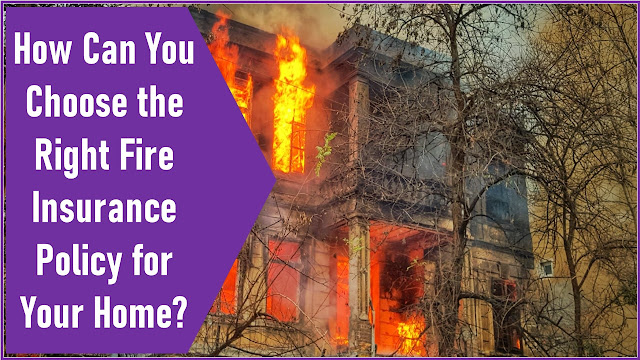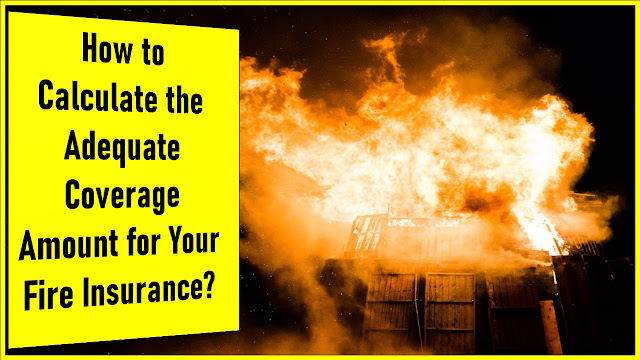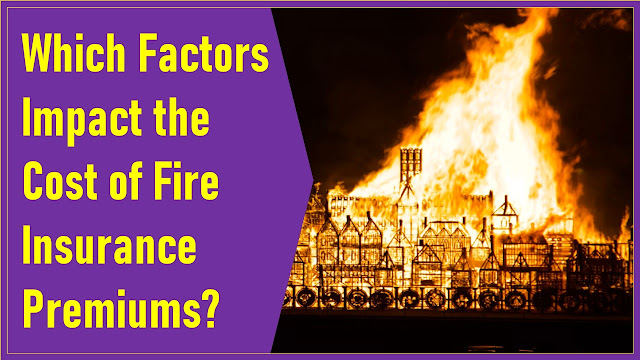How Can You Choose the Right Fire Insurance Policy for Your Home?

Introduction.
In this article, I’ll guide you through the crucial steps to navigate the complex landscape of choosing the right fire insurance policy for your home. Your home is not just a place to live; it’s a sanctuary that houses your most cherished possessions and provides a sense of security. However, the ever-present risk of fire can pose a significant threat to your investment and peace of mind. That’s where a comprehensive fire insurance policy comes into play, offering financial protection and peace of mind in the face of potential disasters.
With the multitude of insurance options available, finding the perfect fit for your home can be daunting. We’ll explore essential considerations, from assessing your property’s unique risks to understanding policy coverage and limits. By the end of this article, you’ll be equipped with the knowledge needed to make an informed decision that ensures your home remains a haven, even in the face of fire-related adversity.
- Assessing your home’s fire risk factors.
- Understanding different types of fire insurance coverage.
- Evaluating policy limits and deductibles.
- Comparing quotes and insurance providers.
- Factoring in additional coverage options.
- Reviewing the claims process and customer support.
Assessing your home’s fire risk factors.
Before you start shopping for a fire insurance policy, it’s essential to understand the specific fire risk factors associated with your home. Factors like your location, proximity to fire-prone areas, climate, and even the age and construction of your house play a significant role in determining your risk. Homes situated in areas prone to wildfires or those with outdated electrical systems may face higher fire risks.
To assess these risk factors, you can consult with local fire departments, review historical fire incidents in your area, and conduct a thorough inspection of your property. By identifying these risks, you can better tailor your fire insurance policy to provide adequate coverage and protection for your unique situation. This assessment lays the foundation for making informed decisions throughout the insurance selection process.
Understanding different types of fire insurance coverage.
Fire insurance policies come in various forms, and it’s crucial to understand the different types of coverage available. The two primary types are replacement cost coverage and actual cash value coverage. Replacement cost coverage ensures that you’ll receive compensation for the full cost of rebuilding or repairing your home to its original condition, while actual cash value coverage takes depreciation into account, providing compensation for your property’s current market value.
Additionally, you should be aware of the coverage scope, which can extend beyond just your dwelling. It may include coverage for personal belongings, additional living expenses if you’re temporarily displaced due to a fire, and liability protection if someone is injured on your property. Understanding these nuances will help you choose a policy that aligns with your needs and budget while ensuring comprehensive coverage for your home and its contents.
Evaluating policy limits and deductibles.
When selecting a fire insurance policy, a critical aspect to consider is the policy’s limits and deductibles. Policy limits represent the maximum amount your insurance provider will pay out in the event of a fire-related loss. It’s vital to ensure that these limits are sufficient to cover the cost of rebuilding your home and replacing your belongings. Keep in mind that underinsuring your property can leave you financially vulnerable if a fire occurs.
Deductibles are the out-of-pocket expenses you must pay before your insurance coverage kicks in. Typically, policies with higher deductibles have lower premiums, while lower deductibles result in higher premiums. Your choice should strike a balance between what you can comfortably afford to pay upfront and the overall cost of your policy. Assess your financial situation and risk tolerance to determine the most appropriate deductible for your needs.
Comparing quotes and insurance providers.
To find the right fire insurance policy, you should gather quotes from multiple insurance providers and carefully compare them. Each provider may offer different coverage options, policy limits, deductibles, and premium rates. Take the time to obtain quotes and evaluate the value each policy provides relative to its cost. While cost is an essential factor, it should not be the sole determinant in your decision.
Additionally, consider the reputation and financial stability of the insurance providers you are evaluating. Look for customer reviews and ratings to gauge the quality of their service. An established and reliable provider with a track record of timely claims processing and fair customer support can make a substantial difference when you need to file a claim after a fire-related incident.
Factoring in additional coverage options.
Beyond the basic coverage for your dwelling and personal property, many insurance policies offer additional coverage options that can enhance your protection. These options may include coverage for specific hazards like wildfires, earthquakes, or floods, which may not be included in a standard fire insurance policy. If you live in an area prone to these additional risks, it’s advisable to consider such coverage.
Furthermore, you can explore endorsements or riders to customize your policy further. For example, you might want to add coverage for high-value items like jewelry, artwork, or electronics, which may have limited coverage under a standard policy. The key is to tailor your insurance policy to address your unique needs and vulnerabilities, ensuring that you have comprehensive protection against a range of potential fire-related risks.
Reviewing the claims process Reviewing customer support.
Understanding the claims process of a fire insurance policy is crucial, as this is the stage where you’ll rely on your coverage the most. When reviewing potential policies, inquire about the steps involved in filing a claim, the documentation required, and the timeline for claim processing. A transparent and straightforward claims process can significantly reduce stress and uncertainty during an already challenging time.
It’s also essential to clarify how the insurance provider assesses the value of your losses and whether they consider factors like depreciation. Some policies offer full replacement cost coverage, while others factor in depreciation, which can affect the amount you receive for damaged or destroyed items. Knowing these details upfront allows you to make an informed choice based on your preferences and financial expectations. Additionally, inquire about the preferred methods of communication during the claims process, such as online portals, phone support, or in-person assistance, to ensure they align with your preferences and convenience.
Customer support is a critical aspect of any insurance policy, especially during stressful times like filing a claim after a fire. Research the reputation of insurance providers when it comes to their customer service. Look for online reviews, ratings, and testimonials from policyholders who have dealt with the company’s customer support in the past. Positive experiences can be a strong indicator of a provider’s commitment to helping its customers navigate the claims process smoothly.
Conclusion.
I hope this comprehensive guide has equipped you with the knowledge and confidence to choose the right fire insurance policy for your home. Safeguarding your most significant investment against the devastating impact of a fire is a critical step toward ensuring your family’s financial security and peace of mind.
In conclusion, remember that selecting the appropriate fire insurance policy involves a thorough assessment of your property’s risks, understanding coverage options, evaluating policy limits and deductibles, and comparing quotes and insurance providers. Additionally, factoring in additional coverage options and scrutinizing the claims process and customer support can make a substantial difference in your overall insurance experience. By carefully considering these factors and tailoring your policy to your specific needs, you can rest assured that you’ve taken a proactive step in protecting your home and cherished possessions from the unexpected.







